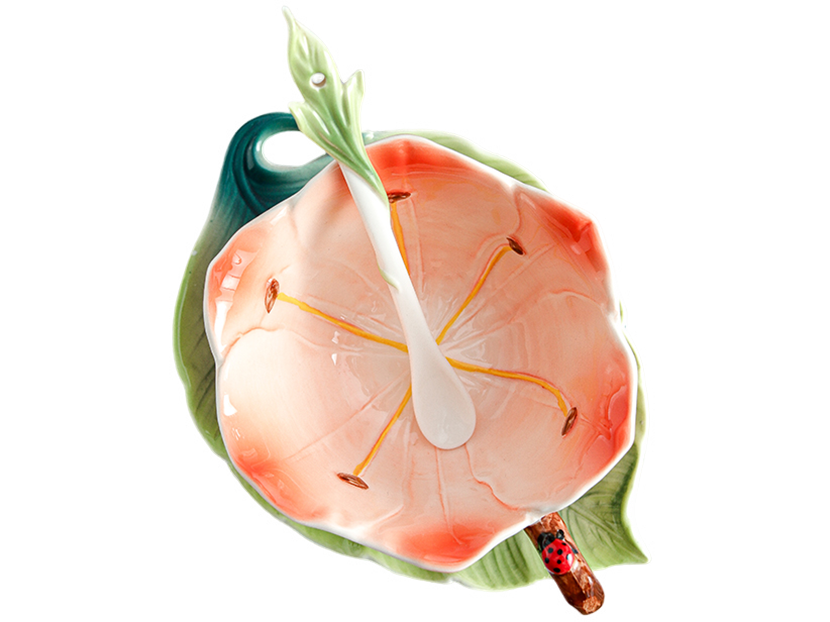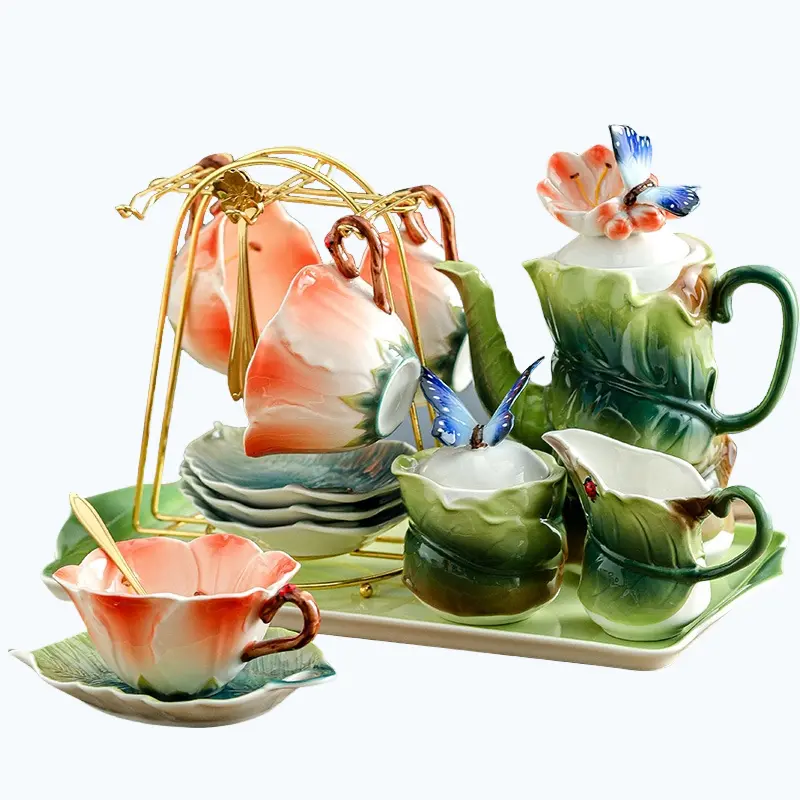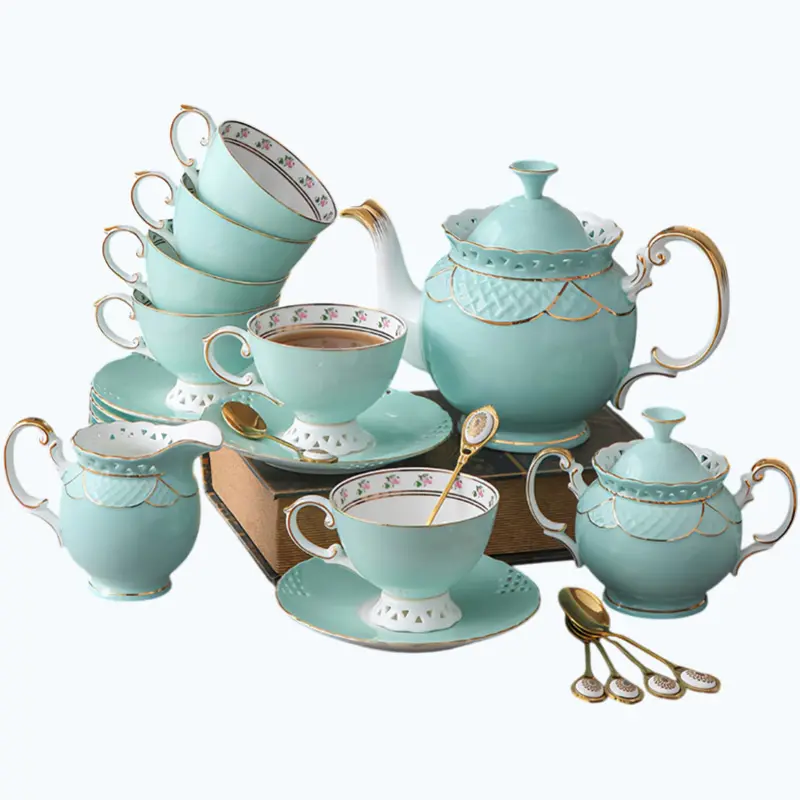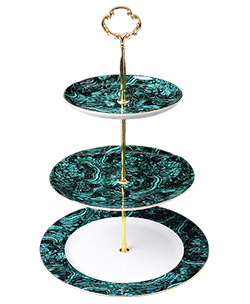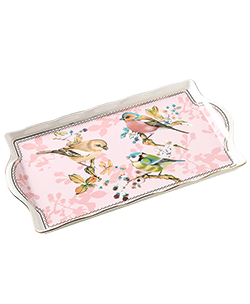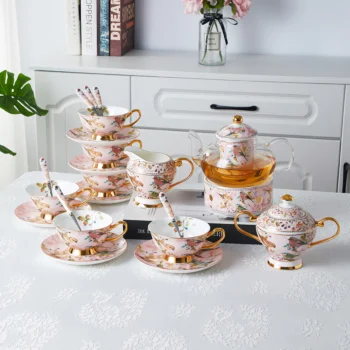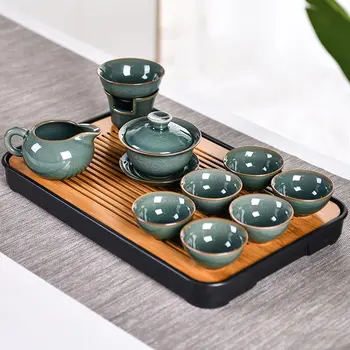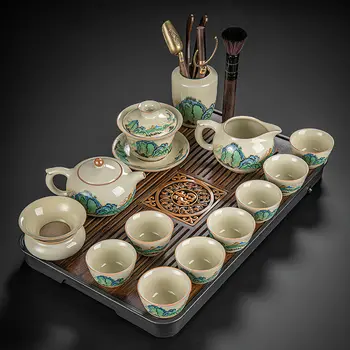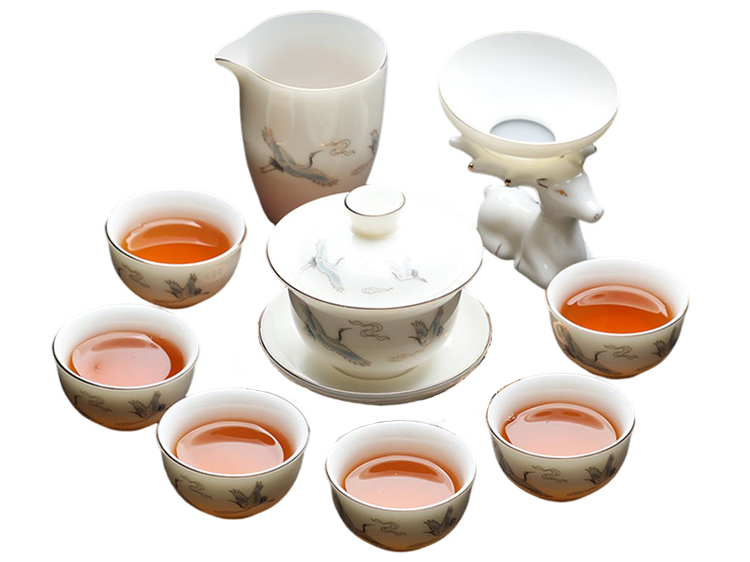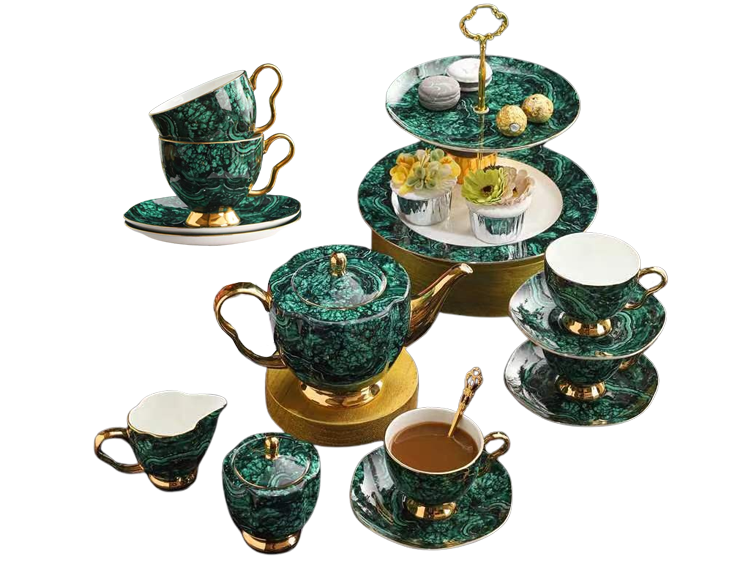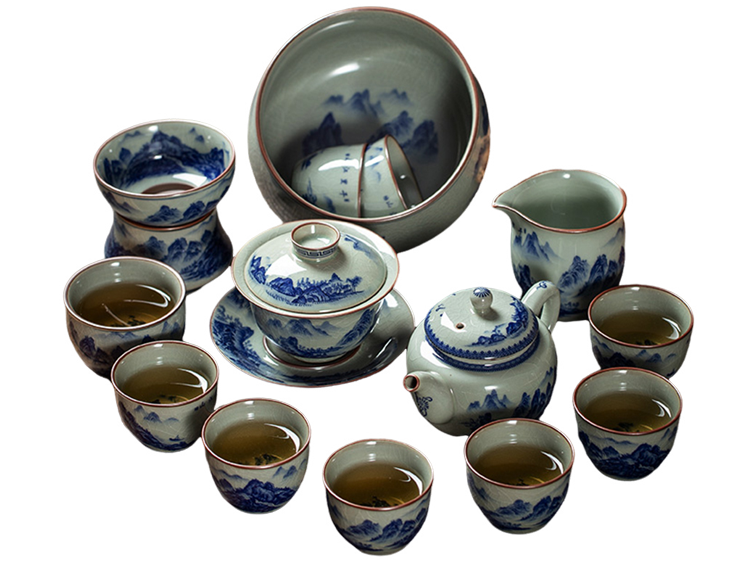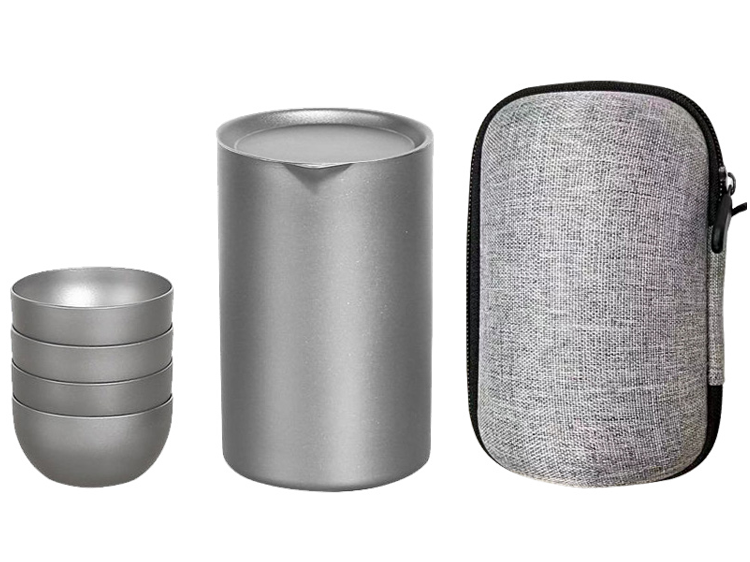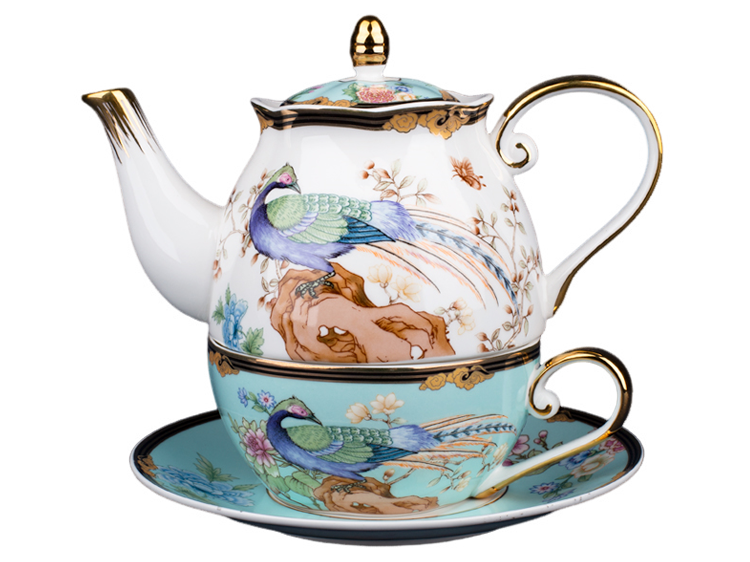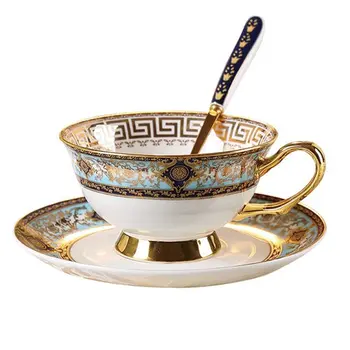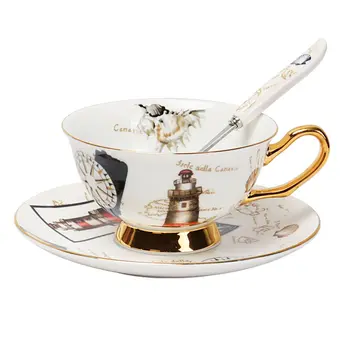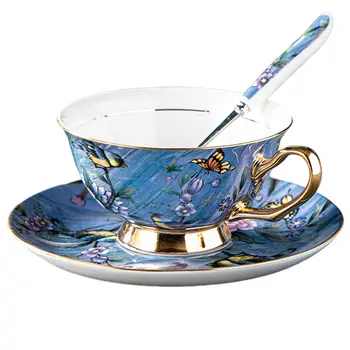Tea Sets You’ll Love
Shop our top-selling items, enjoy tea and coffee
-
Sale
 Select options This product has multiple variants. The options may be chosen on the product page Quick View
Select options This product has multiple variants. The options may be chosen on the product page Quick View
 English Tea Sets
English Tea SetsFloral Afternoon Tea Set with Rack Bone China Teapot Set
USD $169.99USD $199.99Select options This product has multiple variants. The options may be chosen on the product page Quick View
-
Sale
 Select options This product has multiple variants. The options may be chosen on the product page Quick View
Select options This product has multiple variants. The options may be chosen on the product page Quick View
 English Tea Sets
English Tea SetsPink Bird British Tea Set Bone China with Warmer
USD $149.99 – USD $239.99Select options This product has multiple variants. The options may be chosen on the product page Quick View
-
 Select options This product has multiple variants. The options may be chosen on the product page Quick View
Select options This product has multiple variants. The options may be chosen on the product page Quick View
 Chinese Tea Sets, Gongfu Tea Sets
Chinese Tea Sets, Gongfu Tea SetsCeladon Chinese Gongfu Tea Set Porcelain
USD $79.99 – USD $104.99Select options This product has multiple variants. The options may be chosen on the product page Quick View
-
 Chinese Tea Sets, Gongfu Tea Sets
Chinese Tea Sets, Gongfu Tea SetsMountain-range Chinese Gongfu Tea Set Porcelain
USD $84.99 – USD $159.99Select options This product has multiple variants. The options may be chosen on the product page Quick View
 Chinese Tea Sets, Gongfu Tea Sets
Chinese Tea Sets, Gongfu Tea SetsMountain-range Chinese Gongfu Tea Set Porcelain
USD $84.99 – USD $159.99Select options This product has multiple variants. The options may be chosen on the product page Quick View
Why Tea Set Box?
01
Professional teaware supplier offering curated tea sets
02
Reliable free delivery with trusted global carriers
03
Free replacement within 30 days, then at cost price
Shop by Category
Explore the collections containing over a hundred items
Tea Set Selection Guide
Find Your Perfect Match
Selecting the right tea set enhances your tea-drinking experience. Here’s an overview of various tea sets and their characteristics:
Chinese Tea Sets: Known for their traditional craftsmanship, these sets often include Yixing clay, porcelain, or ceramic teapots. Ideal for brewing green, oolong, and black teas, they usually come with tea cups, tea trays, and sometimes Gaiwans (lidded bowls), offering versatility for different brewing methods.
English Tea Sets: Perfect for tea parties, daily use, and gift-giving, these sets are renowned for their elegant designs. They typically include bone china or porcelain teapots, tea cups and saucers, sugar bowls, and creamers. Some sets feature glass teapots with warmers, accompanied by bone china teacups, perfect for serving elegant afternoon tea.
Japanese Tea Sets: Characterized by side-handled or lifting-handle teapots (Kyushu), these sets reflect Japanese aesthetics and are perfect for serving tea ceremonially. They often include a side-handled teapot, tea cups, and a tea tray, with options to choose from, with or without a tray, based on preference and budget.
Gongfu Tea Sets: Combining elements of Chinese and Japanese tea culture, these sets are used for the Gongfu tea ceremony. They typically include a ceramic or porcelain teapot, aroma cups, tasting cups, and a tea tray for an immersive brewing experience.
Travel Tea Sets: Designed for portability, these compact sets include a small teapot, tea cups, and a carrying case, perfect for outdoor use, travel, or office tea breaks.
Tea-for-one Sets: Tailored for individual use, these sets consist of a small teapot that sits on top of a teacup with a matching saucer, ideal for quick, personal tea sessions.
Tea Cup and Saucer Sets: Versatile and classic, these sets include matching tea cups and saucers, perfect for enjoying various teas and complementing any tea set collection.
Selecting the perfect tea set involves considering these factors to ensure it aligns with your needs and preferences:
Purpose: Determine if the tea set is for decorative use, daily tea drinking, tea parties, gift-giving, or travel. Below are various tea set options tailored to specific purposes:
– Chinese Tea Set: Perfect for traditional Chinese tea ceremonies, crafted to enhance the flavor and aroma of various teas. Options include Gaiwans or teapots, depending on your brewing style.
– English Tea Set: Ideal for tea parties, everyday tea enjoyment, and as gifts or tableware. Available in traditional bone china and modern glass teapots with warmers.
– Japanese Tea Set: Known for its suitability for green teas and Japanese aesthetics, these sets include side-handled or lifting-handle teapots, with or without tea trays, for cost-effectiveness.
– Gongfu Tea Set: Designed for authentic Gongfu-style brewing, these sets include small teapots and cups for multiple short infusions, allowing tea enthusiasts to savour the intricate flavours of each steeping.
– Travel Tea Set: Ideal for on-the-go tea brewing, suited for travel or outdoor activities.
– Tea for One Set: Ideal for single servings, these compact sets typically combine a small teapot and cup, making them convenient for personal enjoyment and minimal space usage.
Material: Choose the right material to suit your tea preferences. Ceramic retains heat well and is suitable for various teas. Porcelain provides a smooth texture and elegant appeal, ideal for delicate teas. Bone China is lightweight yet durable, suitable for refined tea experiences. Glass allows appreciation of the tea’s color and brewing process, often paired with a warmer.
Capacity: Select a tea set with a capacity that matches your tea-drinking habits, whether for personal use or serving guests. Chinese tea sets typically feature smaller capacities (around 5 ounces or less), ideal for focused, multiple steepings. English tea sets usually have larger capacities (20 to 40 ounces or more), perfect for serving various guests in one session.
Design: Choose a design that fits your personal style or home decor, from modern and minimalist to ornate and traditional. Select your favorite confidently. Our items look exactly like their photos, ensuring that the product you receive matches what you see.
Proper maintenance not only extends the life of your tea set but also preserves its beauty and functionality, ensuring a delightful tea experience every time. Here are essential tips to keep your tea set in pristine condition:
Cleaning: Clean your tea set based on its material to avoid any damage:
– Ceramic and Porcelain: Rinse with warm water and use a soft brush for a gentle clean, avoiding dishwashers, as they may cause chips or cracks over time.
– Bone China: Hand-wash with a mild detergent and a soft cloth to prevent discolouration, and dry thoroughly before storing to maintain its elegant appearance.
– Glass: Use a mild detergent and a soft sponge, steering clear of abrasive cleaners to protect against scratches or cloudiness, keeping the glass pristine for an enjoyable tea-viewing experience.
Storing: Store your tea set in a dry, cool area to prevent moisture buildup, which can lead to staining or mould. Ensure ceramic, porcelain, and bone china sets are completely dry before storing them to avoid cracking or discolouration. For glass and more delicate items, consider using fabric-lined compartments to prevent scratches.
Inspecting: Regularly check for cracks, chips, or loose handles. Promptly replace broken parts or accessories to maintain both functionality and appearance. Routine inspections ensure safe use and help your tea set last for years to come.
Regular Polishing: Over time, tea sets—especially bone china and certain metals—may lose their shine or develop stains. Use a gentle polishing cloth or specialty cleaner to restore lustre. Regular polishing keeps the set visually appealing and ready for gatherings.
Preventing Odors: Tea sets, particularly ceramic or clay, may retain tea aromas. To prevent this, rinse thoroughly after each use. For deeper cleaning, steep lemon slices in warm water in the pot and cups; this naturally deodorizes without harsh chemicals.
Tea Cup and Saucer Set
Sip in style, refresh in elegance.
Professional Teaware Supplier from China
Tea Set Box is a leading online retailer of premium tea sets, cups, mugs, and servewares, based in China. We offer the best tea sets at great prices.
Treat yourself to a cup of fresh tea:
